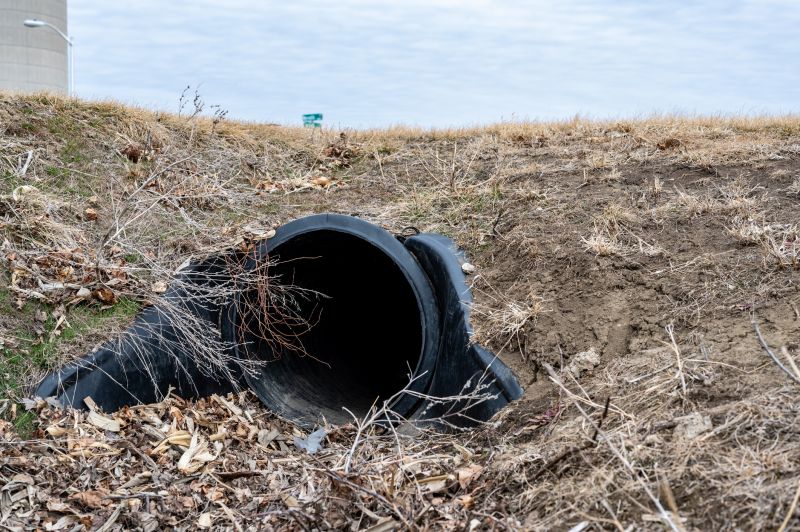Expert Picks For Durable Drainage Extension Solutions
Find out which drainage extensions professionals recommend for long-lasting, efficient water diversion in various settings.
 Drainage extensions are essential components in plumbing and drainage systems that facilitate the connection and extension of existing pipes to accommodate various installation needs. They are used in residential, commercial, and industrial settings to ensure proper water flow, prevent backups, and adapt to space constraints. These products come in a variety of shapes, sizes, and materials, allowing for customization based on specific project requirements. Proper selection and installation of drainage extensions can help maintain system integrity and reduce potential issues such as leaks or blockages.
Drainage extensions are essential components in plumbing and drainage systems that facilitate the connection and extension of existing pipes to accommodate various installation needs. They are used in residential, commercial, and industrial settings to ensure proper water flow, prevent backups, and adapt to space constraints. These products come in a variety of shapes, sizes, and materials, allowing for customization based on specific project requirements. Proper selection and installation of drainage extensions can help maintain system integrity and reduce potential issues such as leaks or blockages.
Top Overall Option
Flexible Drainage Extension Pipe
A versatile flexible drainage extension pipe offers adaptability to various installation scenarios. Its flexible design allows for easy bending and fitting into tight spaces, making it suitable for complex plumbing configurations. Constructed from durable, high-quality materials, it ensures a reliable connection and long-lasting performance in different environments.
Types of Products For Drainage Extensions
PVC Drainage Extension Pipes
Rigid and durable, PVC pipes are commonly used for straightforward drainage extensions and are compatible with many plumbing systems.
Flexible Corrugated Drain Pipes
Corrugated pipes provide flexibility and ease of installation, ideal for irregular layouts or where bending is needed.
ABS Drainage Extensions
ABS plastic offers impact resistance and is suitable for both indoor and outdoor drainage extensions.
Compression Fittings
These fittings allow for quick and secure connections between drainage pipes without the need for glue or soldering.
Slip Joint Extensions
Designed for easy assembly and disassembly, slip joints are useful for temporary or adjustable drainage connections.
Flexible Silicone Connectors
Silicone connectors provide a watertight seal and flexibility, suitable for connecting different pipe sizes or materials.
Universal Adapter Fittings
Adapters that connect different pipe diameters or materials, enhancing compatibility across various systems.
Extendable Drain Pipes
Pipes with telescoping or extendable features that allow for adjustable length to fit specific needs.
Flexible Hose Extensions
Hose-style extensions that can bend and stretch to reach difficult or awkward positions.
Corrugated Perforated Drain Pipes
Perforated pipes used for drainage fields or foundation drainage, allowing water to enter the pipe system.
Push-Fit Drain Extensions
Ease of installation with quick push-fit connections that require minimal tools.
High-Flow Drainage Extensions
Designed to handle larger volumes of water, suitable for commercial or heavy-duty applications.
Underground Drainage Extensions
Specially designed for subterranean installation, resistant to soil and moisture conditions.
Stormwater Drainage Extensions
Extensions intended for stormwater management systems, capable of handling large runoff volumes.
Chemical-Resistant Drain Pipes
Materials formulated to resist corrosive substances, ideal for industrial drainage applications.
Popular Choices
Widely used for their durability and affordability, suitable for many standard drainage projects.
Favored for their ease of installation and adaptability in complex layouts.
Known for impact resistance and longevity, often chosen for outdoor applications.
Popular for quick and tool-free installation, suitable for DIY projects.
Commonly used to connect different pipe sizes securely and watertight.
Trending for their adjustable length, accommodating various installation needs.
Popular for drainage fields and foundation drainage, allowing water entry.
Selected for subterranean systems, resistant to soil and moisture exposure.
Common in stormwater management, capable of handling large runoff volumes.
Preferred where higher water throughput is necessary, such as in commercial settings.
Chosen for industrial environments where chemical exposure is a concern.
Typically made from durable plastics, PVC, or flexible materials, drainage extensions are designed to withstand exposure to water, chemicals, and physical stresses. They often feature secure fittings and adapters to connect seamlessly with existing pipes. Whether extending a drain line for a new fixture, rerouting plumbing, or repairing damaged sections, these extensions are versatile solutions that improve the functionality of drainage systems.
Installation of drainage extensions generally involves cutting and fitting pipes, securing connections with appropriate couplings, and ensuring proper alignment for optimal flow. It’s important to consider the diameter, length, and flexibility of the extension to match the existing plumbing system. Proper planning and measurement are crucial to avoid leaks and ensure long-term performance. Additionally, some extensions are designed with features like slip joints or compression fittings for easier installation and adjustments.
Choosing the right drainage extension depends on the specific application, space constraints, and compatibility with existing plumbing materials. It’s advisable to review product specifications carefully and consider the environment in which the extension will be used. High-quality extensions can contribute to a more efficient and reliable drainage system, reducing maintenance needs and potential water damage over time.
Key Buying Considerations
- Material compatibility with existing plumbing components
- Appropriate diameter and length for the intended application
- Flexibility versus rigidity based on installation environment
- Ease of installation and whether tools are required
- Resistance to chemicals, impact, and environmental factors
- Connection types and fittings compatibility
- Flow capacity and drainage efficiency
- Durability and long-term performance expectations
- Cost and budget constraints
- Availability of replacement parts or adapters
- Local building codes and regulations compliance
- Ease of disassembly for maintenance or adjustments
- Environmental exposure, such as outdoor or underground use
- Size and space constraints of the installation area
- Potential need for custom or extendable solutions
